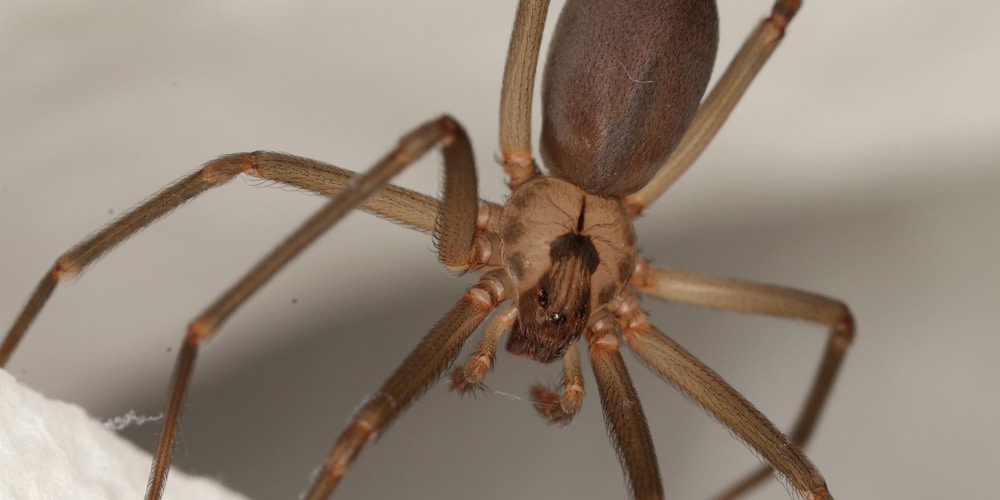Identifying a spider as either a brown recluse or wolf spider can be tricky, especially if you’re unfamiliar with their physical characteristics. Both species are often confused with one another, so it’s essential to know the difference between them.
Here’s an interesting comparison guide that will help you tell the difference between brown recluse spiders and wolf spiders – two of the most commonly found spiders in North America.
If you have insects in your home or yard, it’s essential first to identify the species, as this can help you decide how to get rid of an infestation.
What is a brown recluse spider?

A brown recluse spider (Loxosceles reclusa), also known as a violin spider, is a venomous spider commonly found in the Midwestern and Southern regions of the United States. As one of the most feared species of spiders in North America, these arachnids have distinct physical characteristics that can help you identify them from other types of spiders.
Compared to other species of spiders, brown recluse spiders have a dark brown body with a distinctive fiddle-shaped marking on the cephalothorax (head) region. They also tend to be slightly smaller with long legs and typically less than 2 inches in length.
While most spiders have eight eyes, the brown recluse spider only has six. This variety of spiders has a life span of between one and three years.
If you suspect that you have a brown recluse spider infestation in your home, it is crucial to contact a professional pest control company immediately. These
spiders can be dangerous if they bite, and medical attention is often needed. It’s essential to take preventative measures to get rid of these spiders before they have a chance to cause any harm.
What is a wolf spider?

A wolf spider is another type of common arachnid found in North America. Unlike brown recluse spiders, these species are known for their speed and agility, as well as the fact that they actively hunt and capture their prey by pouncing on insects. Wolf spiders are typically recognized by their large size, with some adults growing to be over 1.5 inches in length.
Wolf spiders can be found both indoors and outdoors, where they prefer to live in dark and damp areas like basements and crawlspaces. They can also often be found under rocks or logs outside, as well as in woodpiles, gardens, and compost piles.
If you are concerned that you may have a wolf spider infestation in your home or yard, it is crucial to take preventative measures like sealing cracks and crevices in your foundation.
Brown Recluse vs. Wolf Spider: Similarities
- Both these spider species are nocturnal
- They prefer dark places such as basements, around furniture, and under sinks
- They are both brown in color
- Wolf spiders are carnivores and will prey on crickets, flies, and anything else that they can catch. Brown recluse spiders are also carnivorous.
Brown Recluse vs. Wolf Spider: Differences
- Wolf spiders are generally hairy, whereas brown recluse spiders have smooth legs.
- Wolf spiders do not build webs, whereas brown recluse spiders do. However, the web that a brown recluse spider builds is very small and nearly invisible – which can make it difficult to spot at first. They also stay in their webs for most of the day, waiting for prey to come along, so these webs are generally quite easy to find.
- Wolf spiders do not have the violin-shaped mark on their backs as brown recluse spiders do. Instead, they possess a stripe that runs along their abdomens.
- When a wolf spider bites you, it will release venom into your skin and cause pain and swelling. However, they rarely bite humans as they are not particularly aggressive and don’t possess the venom that is strong enough to harm us.
- Wolf spiders will move exceptionally quickly when threatened or disturbed, whereas brown recluse spiders resist movement unless they absolutely have to.
Conclusion
If you’re still unsure which spider you’ve come across when trying to identify it, the best thing to do is get it professionally identified so that you can be sure about what type of insect you are dealing with. This will reduce the risk of you misidentifying the spider and putting yourself in danger.